On View
Emmanuel Perrotin Unveils His Biggest Gallery Yet on New York’s Lower East Side
The new space is the size of a small museum and comes outfitted with a bookshop, a garden, and a washer/dryer.
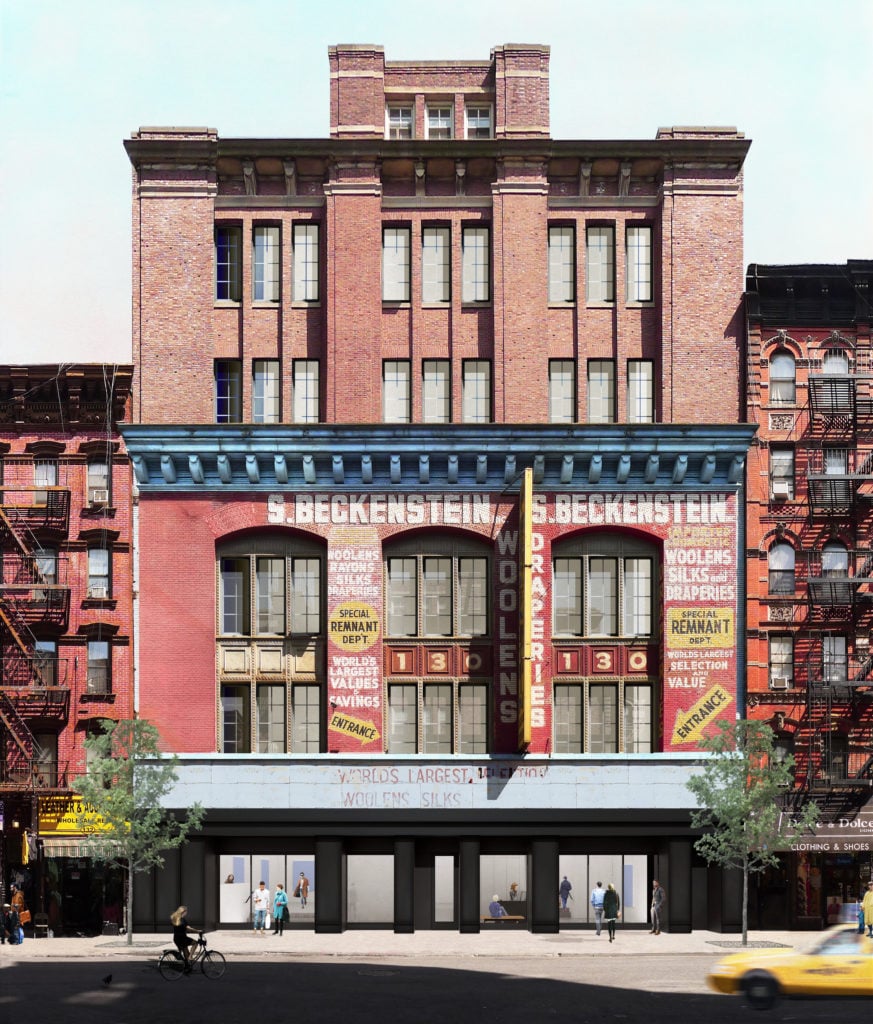
The new space is the size of a small museum and comes outfitted with a bookshop, a garden, and a washer/dryer.

Sarah Cascone

Construction workers are working overtime at New York’s Galerie Perrotin, which partially opened its new Lower East Side space at 130 Orchard Street on April 27. When the gallery fully opens in November, it will be one of New York’s largest.
The first show at the new location, “Iván Argote: La Venganza,” features videos, sculptures, and other works by Colombian artist Iván Argote. But this exhibition occupies only a small part of the still-under-construction venue. Perrotin has taken over the former headquarters of S. Beckenstein, a fabric and interior decorating company. (The former tenant’s painted signs still grace the building’s facade.) Erected in 1902, the building was purchased by Delshah Capital for $28 million in 2015. When construction is complete, the gallery will span 25,000 square feet, with exhibition spaces across three floors.
“This new space will enable us to continue staging ambitious projects and large-scale exhibitions,” the gallery founder’s Emmanuel Perrotin told artnet News in an email. “I already have [opened] 16 galleries, and this is the biggest one!” (Currently, the gallery, in business since 1989, has eight locations, including a Tokyo space opening later this year.)
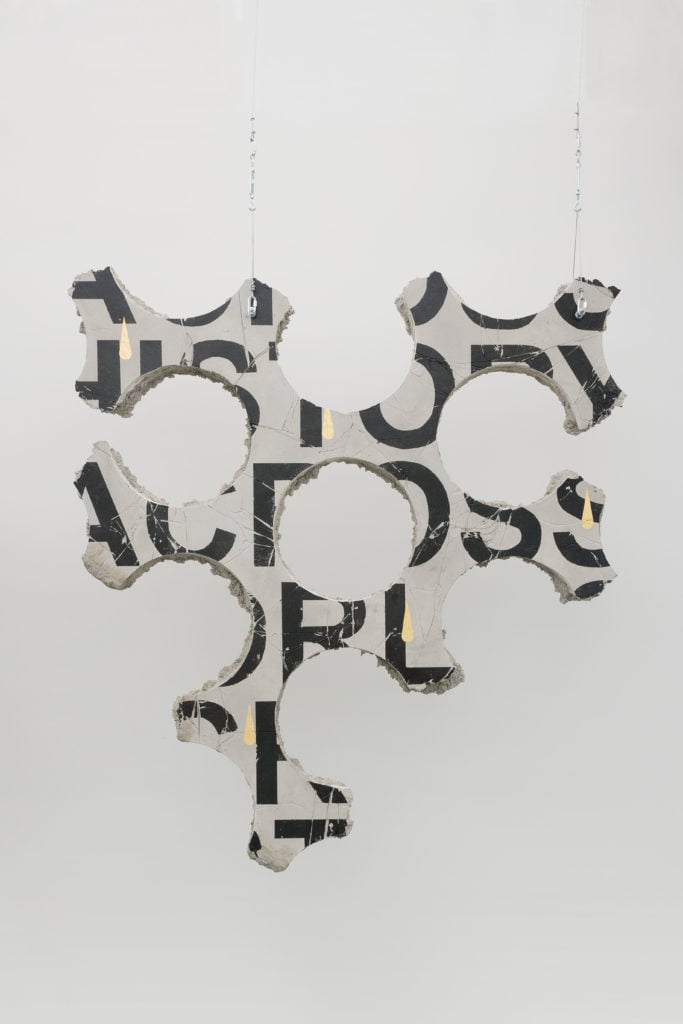
Iván Argote, Among Us – Across History Across Worlds Across History (2017). Courtesy of the Artist and Perrotin. Photographer Guillaume Ziccarelli.
After S. Beckenstein vacated the property in 1999, the ground floor was home to bargain clothing retailers eventually forced out by rent increases. The upper floors were converted into apartments. During an informal hardhat tour, this recent history was still in evidence: orphaned doors with residential doorbells served as remnants of the former living quarters.
Perrotin first made the move to expand to New York from Paris in 2013, opening on the Upper East Side. (Since shuttering that location in November, the uptown space has been taken over by Lévy Gorvy Gallery.) With the move downtown, “we wanted to escape the white cube,” the gallery’s executive director, Peggy Leboeuf, told artnet News. The gallery has had its eye on the building for some time: in 2015, it hosted a pop-up exhibition on the first floor to debut a short film by the French street artist JR.
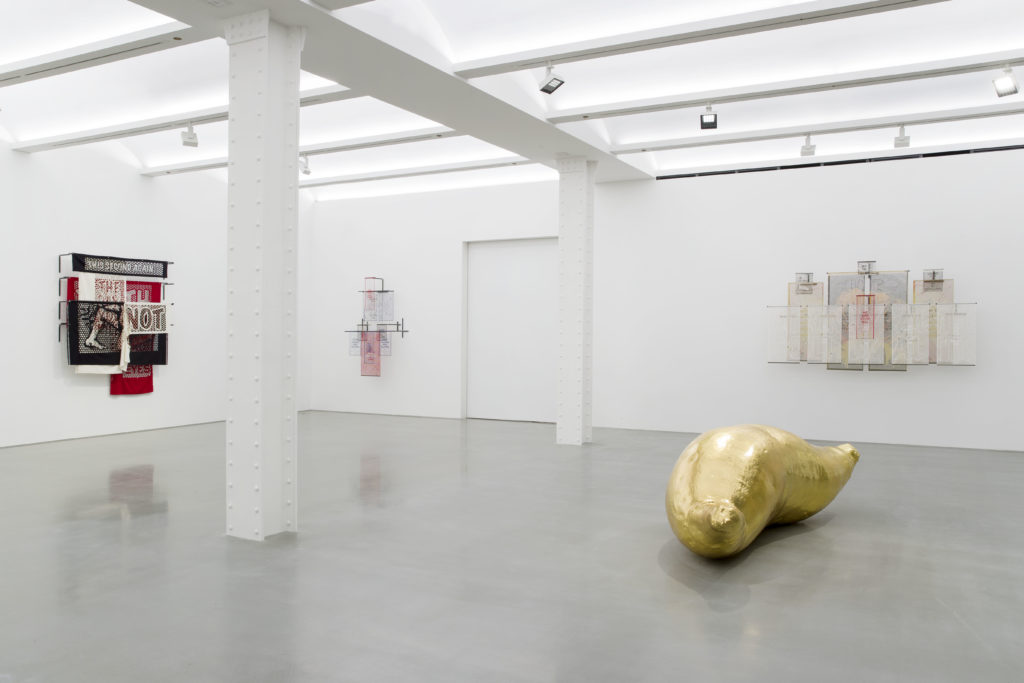
“Iván Argote: La Venganza Del Amor” exhibition view.
Courtesy of the Artist and Perrotin. Photographer Guillaume Ziccarelli.
The construction work, overseen by P.R.O. Peterson Rich Office, is extensive: to create large, uninterrupted gallery spaces on the second and third floors, the gallery will tear out the walls of the central air shaft. They will add a skylight in the center of the roof of the third floor, which boasts 20-foot-tall ceilings. When all is said and done, the gallery will be able to host three exhibitions at any given time, and will have a ground-floor bookshop.
Perrotin is taking over the building’s basement as a storage space and will use the roof to host parties and the occasional outdoor sculpture. He has also commandeered some of the remaining apartments on the upper floors to house visiting artists. When we stopped by, Argote had converted one apartment into a studio of sorts—and also had a load of laundry going in the in-unit washer/dryer.
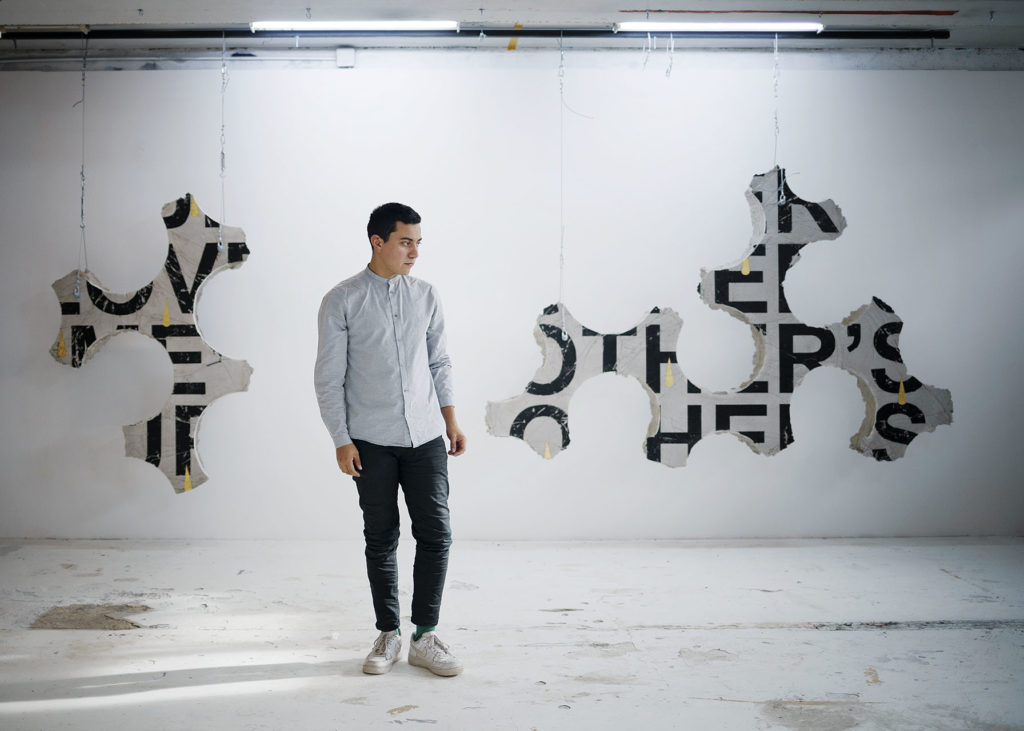
Iván Argote. Courtesy of Claire Dorn.
At only 33, Argote is already a veteran of the gallery, having had his first show with Perrotin back in 2009. “When I met Ivan in 2008 he was just 25 years old,” Perrotin recalls. “He sent me a link to the website he did himself—I must say that I was impressed.”
Perhaps the only artist ever to personally convince Perrotin to represent him, Argote remains one of the gallery’s youngest, with works priced between $18,000 and $80,000. A product of a revolutionary Borgotá commune—“Growing up, I would protest with my family,” he told artnet News—politics infuse his work.
Political slogans emblazon intricate laser-cut paper and fabric works in the show. Weightier-looking concrete pieces look like fragments of a demolished building, suspended in space. A massive gold-plated sculpture of a 3D-scanned sweet potato—introduced to Europeans through Columbian exchange—serves as a commentary on globalization. Argote notes that the difference between existing gold reserves in European and South American countries today is equivalent to the amount of gold taken from the New World during the Colonial era.
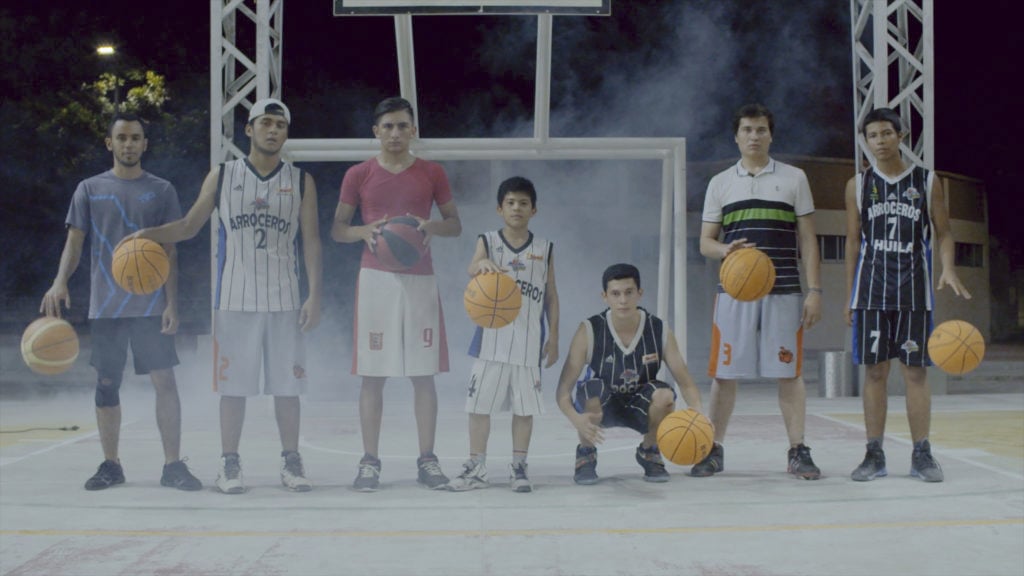
Iván Argote, As Far as We Could Get (2017).
Courtesy of the artist and Perrotin.
Periodically, the lights will turn off and segments from his video, As Far As We Could Get, begin to play. The video was filmed in cities in Indonesia and Colombia that are exact antipodes, as far from each other as possible on the globe—a relationship only six other cities share worldwide. The 21-minute film aims to demonstrate that even in cases of immense geographic distance, “we’re pretty much the same,” Argote says. (With interruptions, the film takes roughly 35 minutes to screen in its entirety.)
Argote says he’s “very flattered” to have been chosen as the subject of the gallery’s first Orchard Street exhibition. “They could have gone with something safer,” he says. His work is undoubtedly a better fit down on the Lower East Side than on the comparatively staid environs of Madison Avenue.
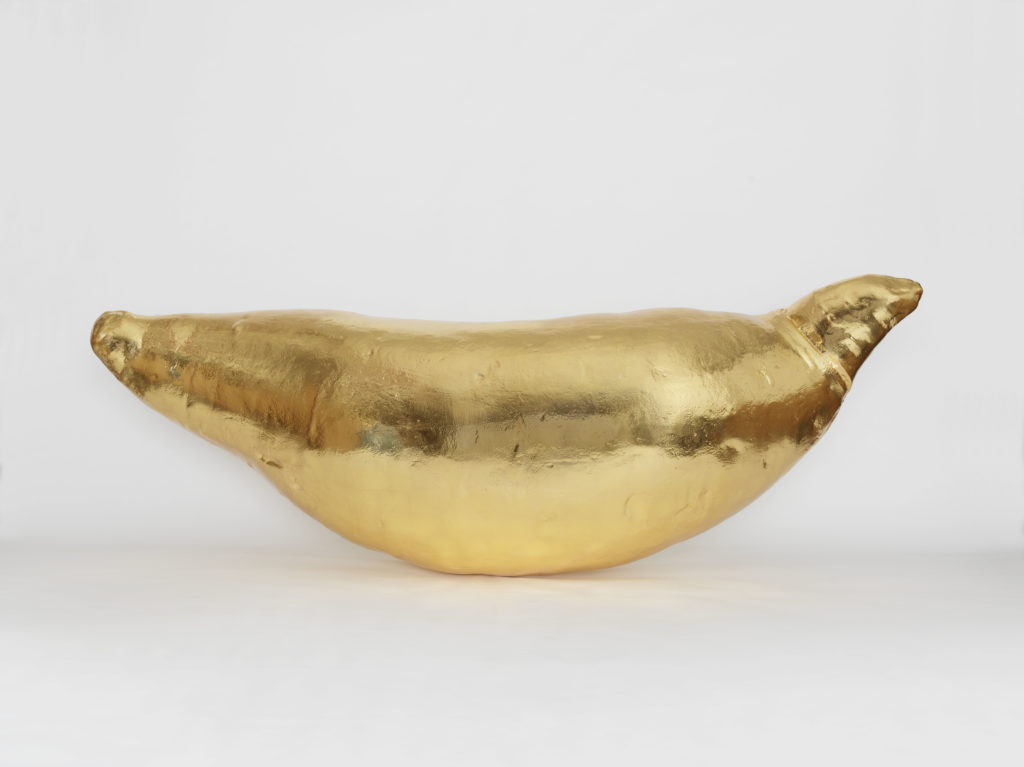
“Iván Argote: La Venganza Del Amor” exhibition view.
Courtesy of the Artist and Perrotin. Photographer Guillaume Ziccarelli.
When Perrotin chose the Upper East Side for his first New York outpost, he told the Art Newspaper at the time that Chelsea’s nexus of galleries was convenient, but “you don’t have time to refresh your eyes from one show and another.”
Four years later, New York’s gallery scene has become more diffuse. “Some of the galleries are moving to Tribeca, some are moving to the Lower East Side, to Harlem; some are staying in Chelsea,” says Leboeuf, who believes the mindset about where to see art in New York is changing accordingly. “It’s not just Chelsea, it’s a downtown area.”